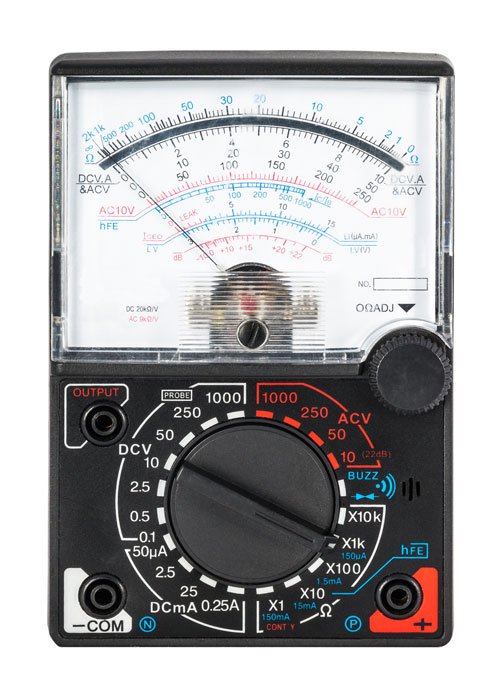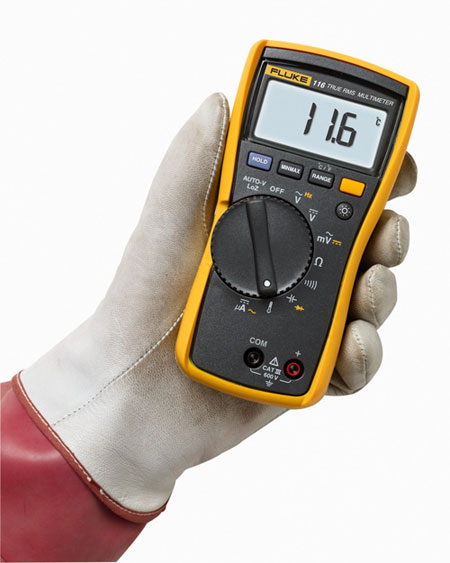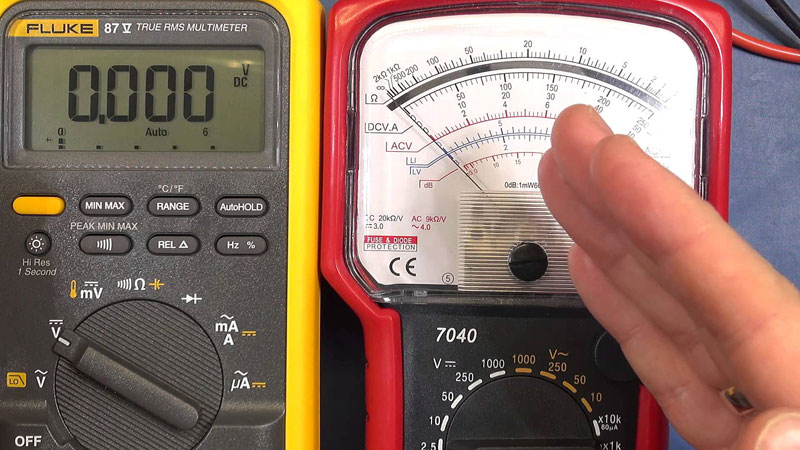It’s no secret that people today can’t get enough of the latest technology. Anything that can be digitized, often is. (For proof, just think of the success of e-readers.)
But when it comes to picking out the right multimeter for your project, you may be wondering if an old school analog multimeter will be a better fit for you than a digital multimeter.
In this post, we’re going to clearly define the difference between the two, so you can decide which option to go with.
No matter your project or price point, we’ve got you covered!

Who Uses Multimeters, Anyway?
If you’re trying to decide between a digital and an analog multimeter, you might be confused about what these products are all about in the first place!
A multimeter, no matter which option you go with, is used to measure the electricity of an object or appliance you’re working with. They can measure volts, resistance, current, and much more.
They’re mainly used by people that work in the electrical industry. With the job outlook for electricians going up by about 14% (to over 600,000 jobs in the United States alone) more people than ever are buying and using multimeters.
Though the great majority of people these days use digital multimeters to get the most instant and accurate readings, that doesn’t mean that analog multimeters aren’t still popular.
OK, So What’s The Deal With Digital Multimeters?

Digital multimeters are popular for a reason. Let’s take a look at some of the most common reasons why people choose digital multimeters.
- They often give more accurate readings than analog multimeters
- The possibility for misreading your measurement is decreased because the digital screen displays exact numbers.
- They have an auto-polarity function. This means that when you’re connecting a test circuit and your meter, you won’t accidentally select the wrong polarity. Again, this works to give you a more accurate reading.
- Digital multimeters help you to avoid making Parallax errors. A Parallax error occurs when you view the pointer of an analog multimeter from another angle and misinterpret the measurement.
- Digital multimeters are more resistant to scratches, drops, and shock failures than their analog counterparts. This is because they don’t have moving parts, like the needle of an analog reader, that can easily be shifted from their correct place.
- You’ll get your measurement faster – and it will be more consistent than with the needle of an analog.
- You are not required to have zero adjustment – another time-saver.
- Digital multimeters are far more affordable than you might think. In fact, there are many multimeter options under $50.
- Thanks to innovations like integrated circuits, digital multimeters won’t weigh you down. They also don’t require as much power as you might expect.
- Digital output can help you to increase the range of applications that are run by computers.
- You can lock your measurement on the screen of a digital reader. This means you don’t have to stop every two seconds to write down your measurement.
- They’re portable
- The input impedance of digital multimeters is high
- Your digital tool can often provide you with more options than an analog multimeter. This means you won’t have to buy and switch between multiple tools while working.
- Digital options usually come with an auto-range feature. This means that, because you can choose the ranges you want to work within, your meter won’t get damaged as easily.
While digital multimeters clearly offer a lot of advantages, it’s not all perfect. Keep reading to learn why a digital option may not be the best fit for you.
Common Disadvantages Of Going With A Digitial Multimeter
Even with all the benefits listed above, you still may want to steer clear of digital options. Why? Take a look at this list to find out.
- The digital display can really wear out the battery life of the digital option. Plus, since many digital options have auto-brightness features, the screen can get dim quickly. If you’re working outside, this can be a real pain to read. Plus, even if your option is plugged into an external source of power, it can still be a serious drain on supplies.
- Though many options are affordable, digital multimeters are still often more expensive than an analog multitool.
- Errors can sometimes be recorded, like if transients or dramatic fluctuations occur.
- The digital meter can sometimes get overheated, especially if it’s in use outdoors for extended periods of time. Even if it still works, you may see occasional errors in reading. To prevent this, let your meter cool down for a few minutes every couple of hours.
- If you’re trying to peak tunable responses or adjust your tuning circuits, an analog multimeter is likely the better option.
- Digital multimeters have a limitation on voltage. Exceeding it can mean seriously damaging your tool.
- There is a word length limit on an A/D Converter. Sometimes, this can increase the possibility for errors when reading your screen.
What About An Analog Multimeter?
Though it might seem like going digital is the obvious choice, depending on the kind of project you’re tackling, analog may be the better option for you.
Here are some of the most popular advantages to using an analog multimeter:
- If you’re dealing with reading fluctuating signals, and need a range, analog is the way to go. Digital options often give you an average, which may throw you off.
- You don’t need batteries or a power source to use an analog reader! If you’re going to be working on longer projects, this is especially helpful. Plus, not having to buy batteries or external power sources can really help you to cut down on costs. That’s always a good thing!
- They won’t get overheated, meaning they may be a better option for outdoor projects, especially when you’re working in warmer climates or times of the year.

- If you’ve accidentally hooked up your analog reader to the wrong polarity, or if your voltage reading is clearly off, you don’ have to rely on a screen to tell you. The needle will peg on its own, alerting you that you’ve likely made an error.
- As we mentioned briefly above, when you’re in the process of tuning a circuit so you can get a min. and max. reading, the needle will make it easier to see changes.
- They’re ideal for projects where you really don’t have a need for more than three resolution digits. If you don’t need total pinpointed measurements, there’s no reason to pay more to get them.
- They’re perfect for a quick Diode Test or basic problem-solving. If accuracy isn’t the most crucial thing at the moment, they’re a great option.
- They last for a long time! In fact, go in any forum and you’ll likely see people proudly showing off pictures of their analog multimeters from years ago!
Still, like its digital counterpart, an analog multimeter will have a few disadvantages. Let’s take a look at some of the most common ones now.
What Are The Disadvantages Of An Analog Multimeter?
Without getting too repetitive, we do want to briefly outline some of the additional potential disadvantages of using an analog multimeter. They can include…
- They don’t have as many advanced features as digital tools will
- It’s much easier to damage an analog tool because the needle is so fragile. If you drop it once, it’s likely that you’ve thrown off the accuracy of the needle, and should purchase a new tool.
- They’re easy to accidentally misread
- You could accidentally choose the wrong scale (for example, read DC when you meant AC, etc.)
- They’re often not as accurate as digital tools, especially when your project requires more exact, precise readings
- They make you do a lot more mental math! Since you may have to do some conversions on your own, it can be easy to make careless mistakes that can throw off the measurements for the rest of your project.

You’re Ready To Make The Choice Between Analog Vs. Digital
Thanks to this concise, plain-English guide on the two main types of multimeters out there, you’re ready to make an informed decision about which kind of tool is the best option for you.
While there are advantages and disadvantages to both digital and analog multimeters, ultimately the model you go with depends on which features and readings are the most essential to the task you have at hand.
If you need more help deciding which type of multimeter to buy, we invite you to check out our website.
Not only do we show you where you can buy some of the most popular multitool models on the market today, but we also offer you reviews of these products!
That way, you know that you’ll be getting the best tool for the specific project you’re working on. No more running back to the store and waiting in line for an hour just so you can return a product that didn’t work.
Feel free to read through our blog for even more information, and of course, if you have any additional questions, don’t hesitate to get in touch with us today.










